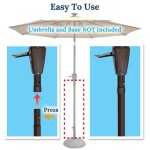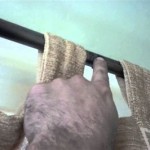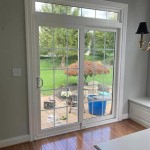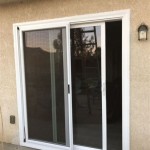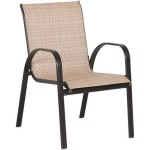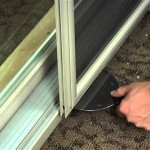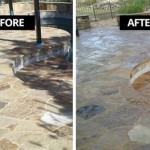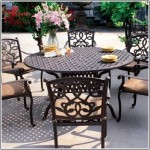How to Make a Patio Swing Cushion
Creating custom cushions for a patio swing enables tailoring comfort and aesthetics to specific preferences and swing dimensions. This process, while requiring basic sewing skills, offers considerable cost savings compared to purchasing pre-made cushions, and provides control over the materials used, ensuring durability and longevity. This article outlines a comprehensive guide to designing and constructing a patio swing cushion, detailing each step from measuring and material selection to sewing and finishing.
Measuring the Patio Swing and Determining Cushion Dimensions
Accurate measurements are critical for a well-fitting patio swing cushion. The initial step involves precisely measuring the seating area of the swing. This includes the width, depth, and back height. Use a flexible measuring tape to ensure accuracy, especially if the swing has curved or irregular shapes. Record all measurements in a consistent unit, such as inches or centimeters, to avoid confusion during the pattern-making stage.
Consider the desired thickness of the cushion when determining the final dimensions. A thicker cushion provides greater comfort but might reduce the available seating space. A common thickness for patio swing cushions ranges from 3 to 6 inches. Adjust the width and depth measurements accordingly to accommodate the cushion's thickness and ensure a comfortable fit within the swing frame.
If the swing has armrests, factor these into the measurements. Decide whether the cushion will extend to the armrests or stop short. Extending the cushion can provide additional support and comfort, but it requires more fabric and potentially a more complex pattern. If the swing has a curved back, use a flexible curve or a series of short, straight measurements to approximate the curve. These measurements will be used to create the pattern for the cushion back.
Sketch a rough diagram of the swing seating area, including all measurements. This diagram will serve as a visual reference throughout the pattern-making and cutting process. Label each dimension clearly to avoid errors. Consider marking the locations of any structural supports or features of the swing that might affect the cushion's fit. For example, if the swing has a raised edge, this needs to be accounted for in the cushion design.
Selecting Suitable Materials for Durability and Weather Resistance
Choosing the right materials is essential for a patio swing cushion that can withstand outdoor conditions. The fabric should be durable, water-resistant, and fade-resistant to ensure longevity. The filling material should provide adequate support and comfort while also resisting moisture and mildew.
For the fabric, consider outdoor-specific options like Sunbrella, Olefin, or polyester canvas. These fabrics are designed to resist fading from sunlight, repel water, and withstand wear and tear. Sunbrella is a premium choice known for its exceptional durability and fade resistance. Olefin offers a more budget-friendly alternative with good water resistance and durability. Polyester canvas is another affordable option, but it may require additional waterproofing treatment.
Avoid using indoor fabrics, such as cotton or linen, as they are not well-suited for outdoor use. These fabrics are prone to fading, staining, and mildew growth when exposed to the elements. While they may be less expensive initially, they will require frequent replacement, making them a less economical choice in the long run.
The filling material plays a crucial role in the cushion's comfort and longevity. Options include polyester fiberfill, polyurethane foam, and shredded foam. Polyester fiberfill is a lightweight and relatively inexpensive option. It provides decent cushioning but may compress over time. Polyurethane foam offers better support and durability. It comes in various densities, allowing for customization of the cushion's firmness. Shredded foam is a recycled option that provides good cushioning but can be more difficult to work with.
Consider using a water-resistant liner to protect the filling material from moisture. This liner will act as a barrier between the fabric and the filling, preventing water from seeping in and causing mildew or mold growth. Water-resistant liners are typically made from coated nylon or polyester. They can be sewn around the filling material before inserting it into the cushion cover.
In addition to the fabric and filling, consider the thread used for sewing the cushion. Opt for a UV-resistant thread designed for outdoor use. These threads are less likely to break down or fade when exposed to sunlight. Polyester or nylon threads are good choices for outdoor projects.
Constructing the Cushion Cover and Filling
Once the materials are selected, begin creating the pattern for the cushion cover. Transfer the measurements from the sketch to a large piece of paper or pattern-making material. Draw the outline of each cushion component, including the top, bottom, and sides. Add seam allowances of approximately 1/2 inch to each edge of the pattern pieces. These allowances will be used for sewing the pieces together.
Cut out the pattern pieces and pin them to the selected fabric. Ensure that the fabric is laid out flat and wrinkle-free before cutting. Use sharp scissors or a rotary cutter to cut the fabric along the pattern lines. Cut out all the necessary pieces for the cushion cover, including the top, bottom, sides, and any optional features like piping or ties.
Sew the cushion cover pieces together using a sewing machine. Start by attaching the side pieces to the top and bottom pieces. Use a straight stitch and backstitch at the beginning and end of each seam to secure the stitching. If adding piping, insert it along the edges of the cushion cover before sewing the pieces together. Piping adds a decorative touch and reinforces the seams.
Leave an opening in one of the seams for inserting the filling material. This opening should be large enough to easily insert and remove the filling. Consider adding a zipper or Velcro closure to the opening for easy access and secure closure. If using a zipper, install it along the seam before sewing the remaining pieces together. If using Velcro, attach the hook and loop strips to the inside edges of the opening.
Prepare the filling material by fluffing it up to ensure even distribution. If using foam, cut it to the desired size and shape. Insert the filling material into the cushion cover through the opening. Distribute the filling evenly throughout the cushion to avoid lumps or gaps. Once the cushion is filled to the desired level of firmness, close the opening using the zipper or Velcro closure.
If adding ties to the cushion, attach them to the sides of the cushion cover before filling it. Ties can be used to secure the cushion to the swing frame, preventing it from sliding or shifting. Cut strips of fabric to the desired length for the ties. Fold each strip in half lengthwise and sew the edges together to create a tube. Turn the tube inside out and press it flat. Attach the ties to the cushion cover using a strong stitch.
To enhance the durability and appearance of the cushion, consider adding topstitching along the seams. Topstitching involves sewing a line of stitching close to the edge of the seam. This reinforces the seam and creates a decorative finish. Use a matching thread color for topstitching to create a cohesive look.
Once the cushion is assembled, inspect it for any imperfections or loose threads. Trim any loose threads and reinforce any weak seams. Place the cushion on the patio swing to test the fit and comfort. Make any necessary adjustments to ensure a comfortable and secure fit. Over time, the filling may compress slightly, so consider adding extra filling initially to compensate for this.

Outdoor Swing Makeover Tatertots And Jello

Porch Swing Cushions Rake And Make

Porch Swing Makeover Outdoor Furniture Cushions Patio

Outdoor Swing Makeover Cushions Used Furniture

How To Make Cushion For A 2 Or 3 Seater Patio Swing

Diy Porch Swing Cushion Cover How To Make Cussion Simple Tutorial

Diy Porch Swing Plans Build Your Own This Weekend

Patio Swing Makeoverdiy Show Off Diy Decorating And Home Improvement Blog

Porch Swing Makeover

Custom Outdoor Glider Porch Swing Cushions

